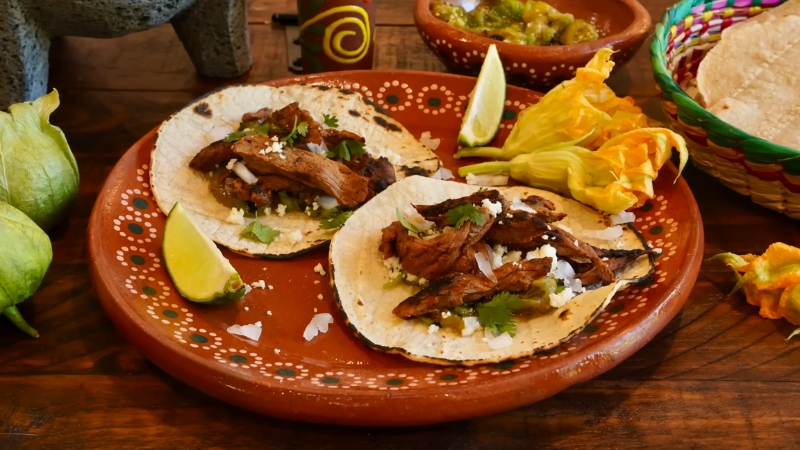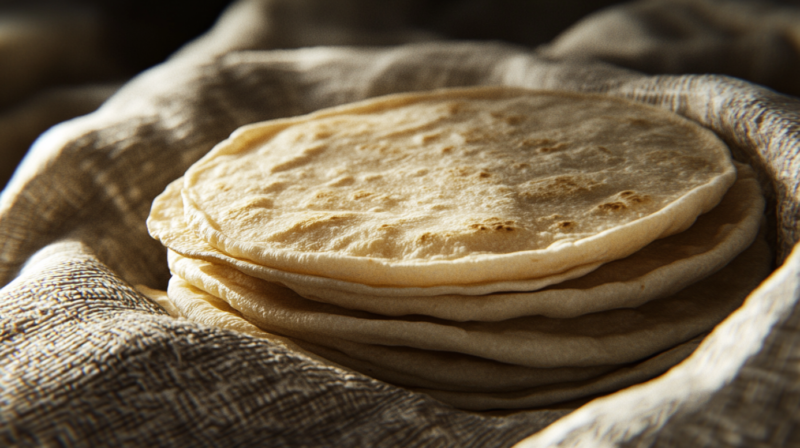Let’s clear something up before someone’s abuela gets offended: Mexican and Tex-Mex are not the same thing.
They’re related, sure—think cousins who grew up on different sides of the border—but they’ve each got their own flavor, story, and style.
Confusing them is like calling New York pizza and Chicago deep dish “basically the same.” You’ll start a food fight you weren’t ready for.
So, if you’ve ever stared at a menu and thought, “Wait… is this actually Mexican food?”—you’re in the right spot. Let’s break it down.
A Quick Origin Story
Mexican Cuisine: Thousands of Years in the Making

We’re talking about a food culture older than most languages. Indigenous traditions, centuries of cooking over open flames, and a rich blend of pre-Hispanic staples like corn, beans, squash, tomatoes, and chiles.
Add the colonial-era influence (hello, Spanish-introduced dairy and pork), and you get a complex, layered cuisine that varies dramatically from Oaxaca to Jalisco to Yucatán.
Tex-Mex: Born on the Border, Raised with Cheese
Tex-Mex? It’s a product of cultural collision—Tejano (Texan-Mexican) communities mixing Mexican traditions with available American ingredients and tastes. It grew out of necessity and adaptation.
Now, it’s a full-fledged cuisine with its own swagger. Picture flour tortillas, melted cheddar, canned chili con carne, and beef-heavy everything. It’s the culinary version of wearing cowboy boots with a mariachi jacket—unexpected, bold, and unapologetically hybrid.
The Tell-Tale Signs: What’s Tex-Mex and What’s Mexican?
Let’s not overcomplicate it. Below are the giveaway signs, kind of like when you meet someone who says they’re “from LA” but hasn’t heard of In-N-Out.
The Cheese Situation
- Tex-Mex: Cheese is practically a food group. Cheddar, Monterey Jack, queso blanco (the Tex-Mex kind, which is really more like Velveeta’s cooler cousin). Everything is drenched, melted, or stuffed with it.
- Mexican: Cheese plays a supporting role. Cotija, queso fresco, panela—used sparingly, often crumbled, never drowned. It complements, not dominates.
Tortilla Choices

- Tex-Mex: Flour tortillas are king. Burritos, fajitas, soft tacos—flour rules the roost.
- Mexican: Corn tortillas are sacred. Made fresh, often daily, and used in just about everything. Flour tortillas do exist, but they’re more regional (like in the North).
Spice Levels and Flavor Profiles
- Tex-Mex: Bolder, heavier, meatier. Lots of cumin, chili powder, and sometimes a wallop of heat, but it leans rich and savory more than nuanced.
- Mexican: A symphony of chiles—fresh, dried, smoked, toasted. Not always hot, but always flavorful. There’s depth, smoke, brightness, and spice—layered like a telenovela plot.
The Meat of the Matter
- Tex-Mex: Beef is the MVP. Brisket tacos, beef enchiladas, steak fajitas—it’s a Texas thing.
- Mexican: More pork, goat, chicken, and seafood depending on the region. Think cochinita pibil, carnitas, barbacoa, and mole with chicken.
So… What About the Dishes?
Deep-fried burritos—Tex-Mex doing what it does best: crispy excess. Spit-roasted pork with pineapple, born from Lebanese influence, now a street food legend. Crunchy, pre-formed shells filled with ground beef and iceberg lettuce. Slow-cooked, seasoned meat (often lamb or beef cheek), traditionally cooked underground. Velveeta-based molten cheese glory. Delicious? Yes. Mexican? Nope. Melted Oaxaca or Chihuahua cheese with chorizo—bubbly, stretchy, and totally legit. Grilled meat and peppers, served sizzling—created in Texas, adored nationwide. Shredded chicken in chipotle-tomato sauce, often found in tacos or tostadas. Refried beans, sour cream, guac, salsa, cheese… a potluck darling, but not from Mexico. Masa stuffed with meat or veggies, steamed in corn husks or banana leaves. Flour tortillas wrapped around beef, cheese, beans—often the size of a newborn. Soft corn tortillas with home-cooked stews—comfort food in taco form. Smothered in brownish sauce—Tex-Mex through and through. Filled with chicken or cheese, topped with tomatillo or red chile sauce. Created in a border town (Piedras Negras), but American-style nachos with cheese sauce are full Tex-Mex. Corn tortilla chips simmered in salsa, often served with crema, queso fresco, and eggs. Served in a deep-fried tortilla bowl with ranch or sour cream dressing. Warm corn salad with lime, mayo, chili powder, and cotija—Mexican street corn’s spoonable sibling. Tex-Mex comfort, often with bacon or sausage. Fried eggs over tortillas with salsa, beans, and maybe a side of plantains. Served mashed and topped with melted cheddar. Whole beans cooked simply in a pot—earthy, humble, and endlessly versatile. A Tex-Mex signature move. Slightly tangy, thinner than sour cream—used delicately as a finisher.
Tex-Mex Dishes
Mexican Dishes
Chimichangas
Tacos al Pastor
Hard Shell Tacos
Barbacoa
Queso Dip
Queso Fundido
Fajitas
Tinga de Pollo
Seven-Layer Dip
Tamales
Burritos (giant ones)
Tacos de Guisado
Beef Enchiladas with Chili Gravy
Enchiladas Verdes or Rojas
Nachos
Chilaquiles
Taco Salad
Esquites
Breakfast Tacos (with eggs and cheese)
Huevos Rancheros
Refried Beans with Lard and Cheese
Frijoles de la Olla
Sour Cream Topping Everything
Crema Mexicana
The Flavor of Identity
Let’s be real—food is emotional. It’s heritage, home, memory, and pride all rolled into one bite. So when folks get a little prickly about Tex-Mex being confused for Mexican cuisine, it’s not just semantics—it’s about preserving cultural identity.
#DiplomaciaCulturalMX@EmbamexJP commemorated the 11th anniversary of the UNESCO Declaration to recognize Traditional Mexican Cuisine as Intangible Cultural Heritage of Humanity, with the 2nd edition of a Mexican cuisine cookbook.https://t.co/E1dGsL3Zju pic.twitter.com/RvlMtjv8Je
— Diplomacia Cultural MX (@DiplomaciacMX) November 20, 2021
Mexican cuisine has been recognized by UNESCO as an Intangible Cultural Heritage of Humanity (fancy, huh?), while Tex-Mex is more like the rowdy cousin that’s less interested in tradition and more into a second helping of queso.
Both have value. Both are delicious. But they are not interchangeable.
Why the Confusion?
Blame the grocery store aisles labeled “Mexican” that are packed with taco seasoning packets and nacho cheese. Or decades of fast food chains packaging Tex-Mex flavors under a vague “Mexican” label.
Or maybe just the fact that Tex-Mex is the version most Americans grew up with, especially outside of the Southwest.
But now that you’re paying attention (and maybe side-eyeing that can of refried beans), you’ll start spotting the differences. And they’re hard to un-see.
Can They Coexist?
View this post on Instagram
Absolutely. They already do. There’s nothing wrong with loving Tex-Mex enchiladas on a Friday night and then going for birria tacos on Saturday. Food isn’t about choosing sides—it’s about knowing what you’re eating and appreciating it for what it is.
Just don’t call your chili-smothered burrito “authentic Mexican” and expect not to get a side-eye from someone’s tia.
Final Bite
Mexican and Tex-Mex cuisines might share ingredients, but they don’t speak the same culinary language. One is steeped in centuries of tradition and regional depth; the other is a vibrant, crowd-pleasing fusion that leans into boldness and American pantry staples.
Both belong on the table. Just maybe on different plates.
And if you’re looking for a crispy, satisfying side to go with your meal, homemade tortilla chips are the way to go—simple to make and always a hit.
Now go eat something delicious—and call it what it actually is.
Hi there, my name is Kelly Barlow and kellytoeat.com is my blog. Here, I write about various recipes I want to reccommend to readers.
I try to find the best possible recipes that can attract the attention of readers, and at the same time, I strive to write it in the most engaging manner possible.
When I was younger, I wanted to become a chef. Sadly, it wasn’t meant to be, but at the very least, I write about it.
